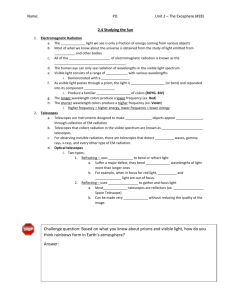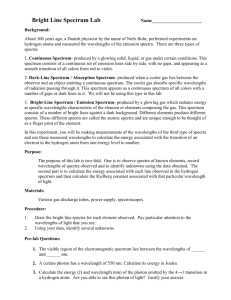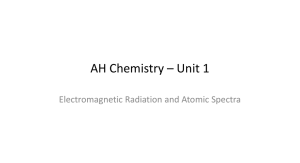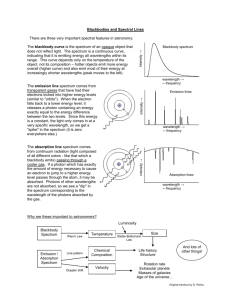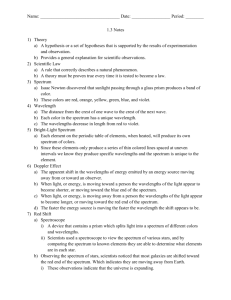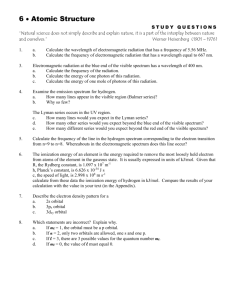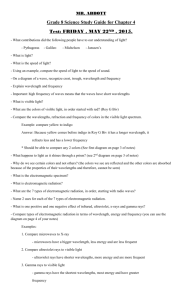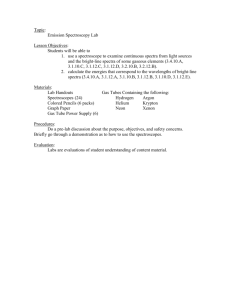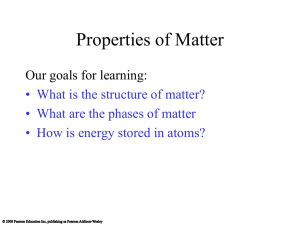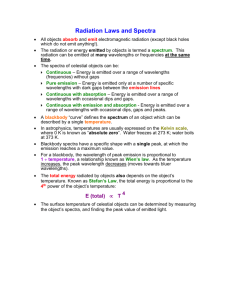File
advertisement
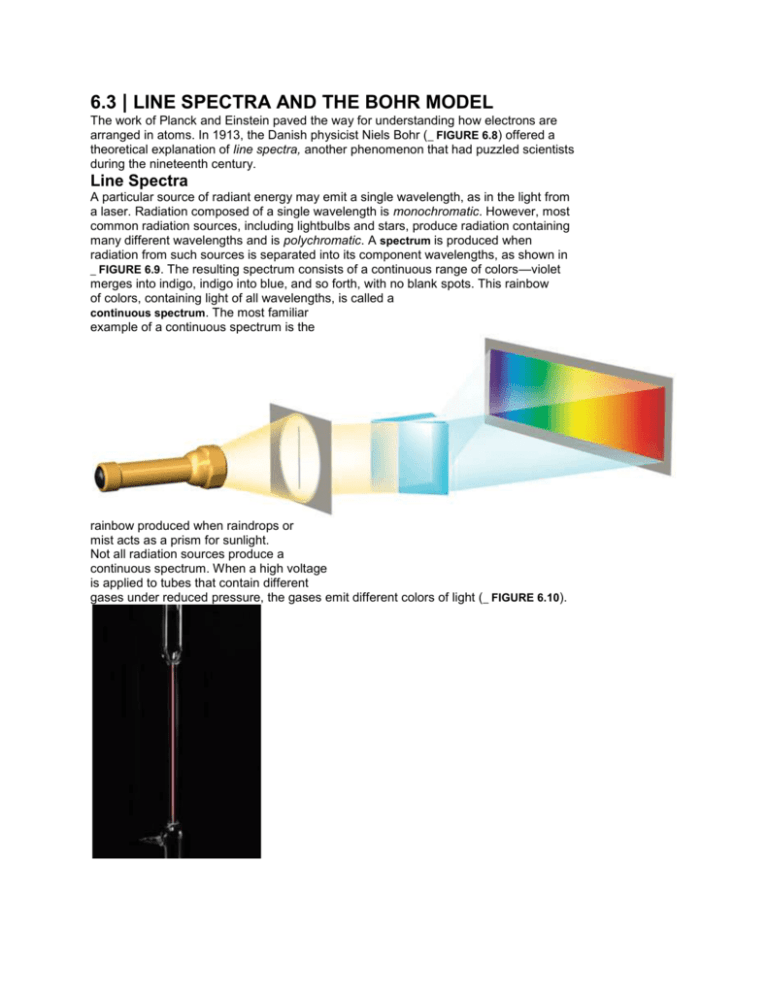
6.3 | LINE SPECTRA AND THE BOHR MODEL The work of Planck and Einstein paved the way for understanding how electrons are arranged in atoms. In 1913, the Danish physicist Niels Bohr (_ FIGURE 6.8) offered a theoretical explanation of line spectra, another phenomenon that had puzzled scientists during the nineteenth century. Line Spectra A particular source of radiant energy may emit a single wavelength, as in the light from a laser. Radiation composed of a single wavelength is monochromatic. However, most common radiation sources, including lightbulbs and stars, produce radiation containing many different wavelengths and is polychromatic. A spectrum is produced when radiation from such sources is separated into its component wavelengths, as shown in _ FIGURE 6.9. The resulting spectrum consists of a continuous range of colors—violet merges into indigo, indigo into blue, and so forth, with no blank spots. This rainbow of colors, containing light of all wavelengths, is called a continuous spectrum. The most familiar example of a continuous spectrum is the rainbow produced when raindrops or mist acts as a prism for sunlight. Not all radiation sources produce a continuous spectrum. When a high voltage is applied to tubes that contain different gases under reduced pressure, the gases emit different colors of light (_ FIGURE 6.10). The light emitted by neon gas is the familiar red-orange glow of many “neon” lights, whereas sodium vapor emits the yellow light characteristic of some modern streetlights. When light coming from such tubes is passed through a prism, only a few wavelengths are present in the resultant spectra (_ FIGURE 6.11). Each colored line in such spectra represents light of one wavelength. A spectrum containing radiation of only specific wavelengths is called a line spectrum. When scientists first detected the line spectrum of hydrogen in the mid-1800s, they were fascinated by its simplicity. At that time, only four lines at wavelengths of 410 nm (violet), 434 nm (blue), 486 nm (blue-green), and 656 nm (red) were observed (Figure 6.11). In 1885, a Swiss schoolteacher named Johann Balmer showed that the wavelengths of these four lines fit an intriguingly simple formula that relates the wavelengths to integers. Later, additional lines were found in the ultraviolet and infrared regions of hydrogen’s line spectrum. Soon Balmer’s equation was extended to a more general one, called the Rydberg equation, which allows us to calculate the wavelengths of all the spectral lines of hydrogen: [6.4] _ FIGURE 6.11 Line spectra of hydrogen and neon. _ FIGURE 6.10 Atomic emission of hydrogen and neon. Different gases emit light of different characteristic colors when an electric current is passed

